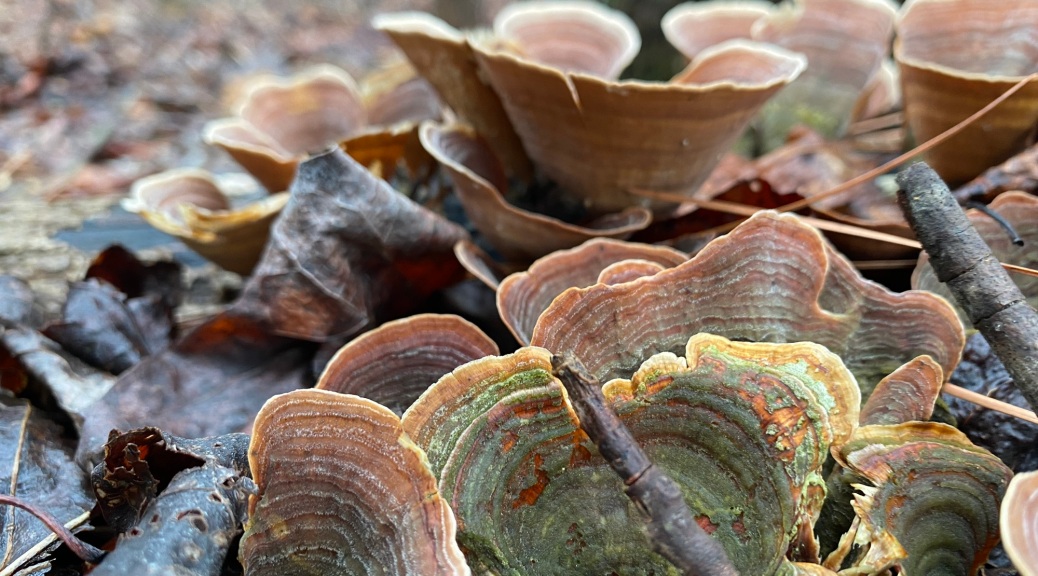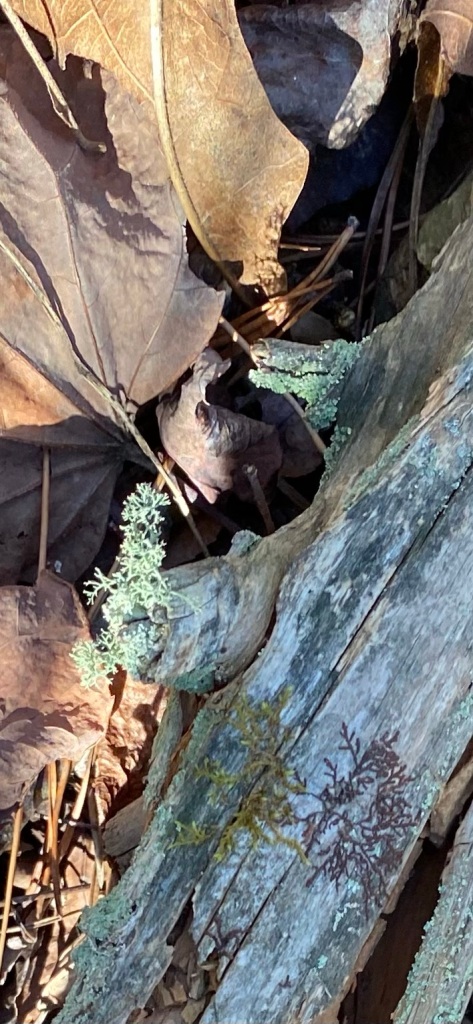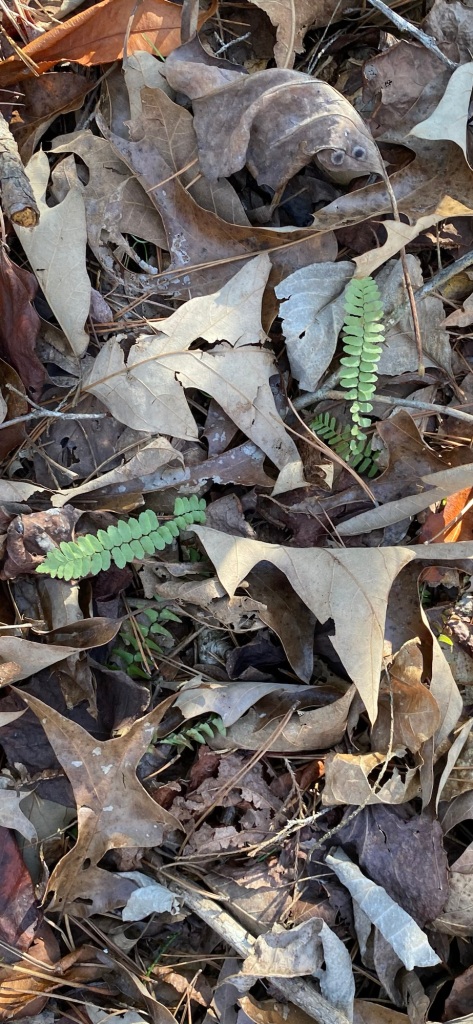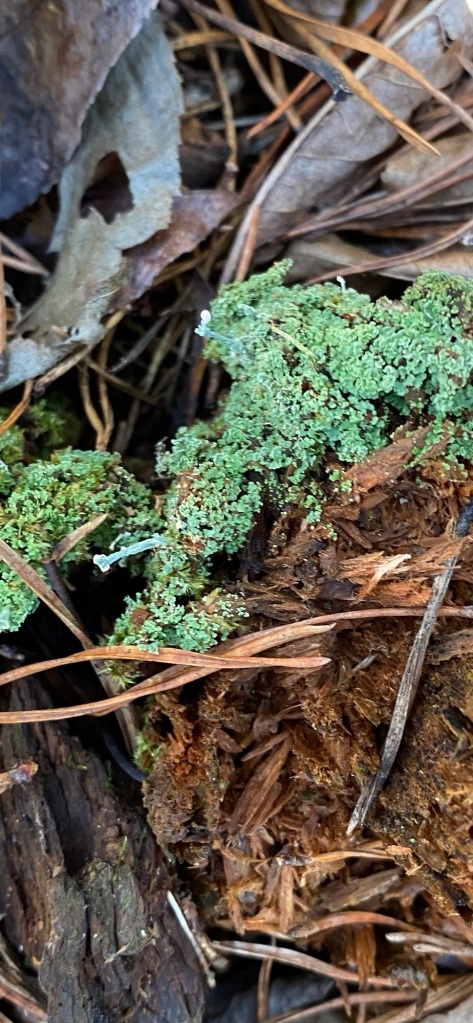


Today we startled a rabbit as we walked through the woods in the misty rain. Somehow we caught him by surprise, crunching up the hillside behind the shed. He startled and panicked, ran 50 feet away, then stopped, stretched his legs and shook it off.
There were a few puddles of water collecting in depressions up top in the clearing.
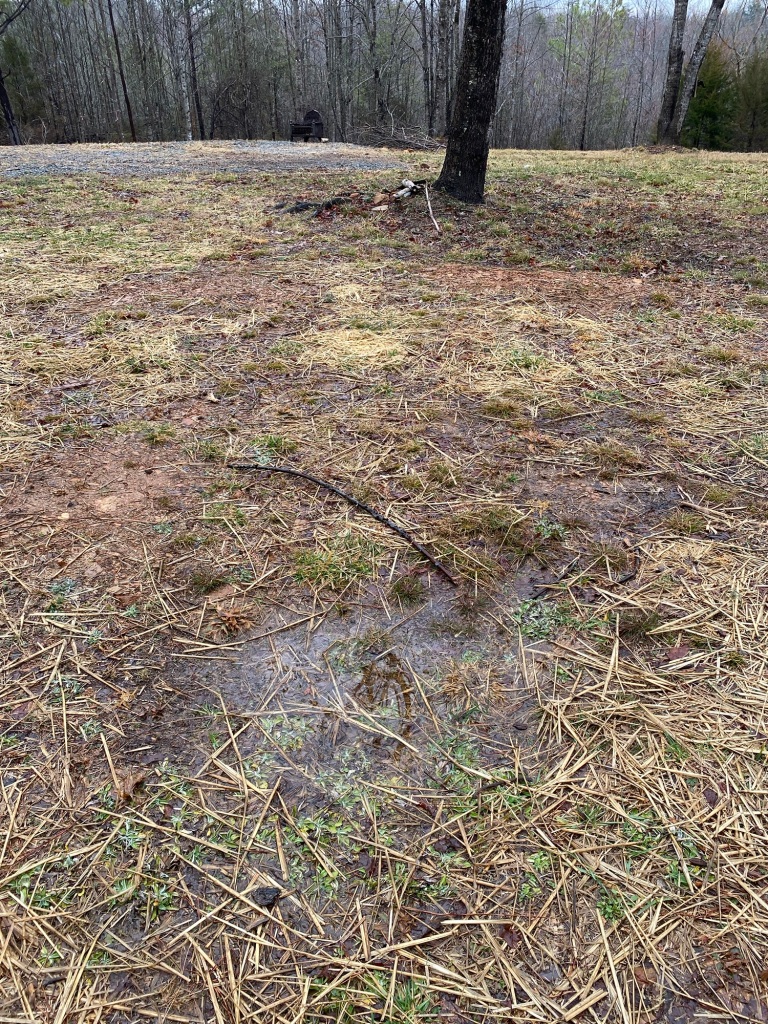

Mainly seen in winter and spring. It grows on dead elder trees and on fallen branches, but occasionally you may also find it growing on other kinds of hardwood. Jelly Ear is sometimes used in cookery, where it provides an interesting texture but is nothing special in terms of flavour. Young fresh fruitbodies (above) are generally considered the best. We have not tried it although we hear it’s good in soups and adds nutrients.
We’re excited to report we’ve almost finished insulating the shed. We cut down a few more black knot infected black cherry trees and some other standing dead trees. We have so much work to do in the forest. The ground was wet and squishy in areas especially down at the bottom of the slope and around the waterway. We found a few more downy rattlesnake orchids. The leaves on the beech trees are showing buds. We went across to look at the waterfalls in the wet weather.
We pulled out vines, found mosses, worts and lichen in abundance. Even in the wintry weather, we found the jelly wood ear and crowded parchment fruiting bodies.







